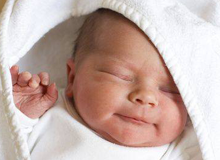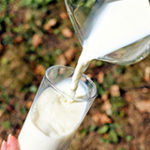Blog

Breathing Issues in Your Newborn
Anyone who has ever been in a delivery room, be they parent, birthing coach, doctor, or nurse, awaits the same thing: a newborn baby’s first cry. “WAAAAAAAAAAA!!!” and everybody cheers. But did you know that a baby cannot breathe through his wide-open mouth, except when he cries? That’s right, a newborn baby must breathe through his nose, not his crying mouth, if he wants to breathe at all. Until approximately age three or four months, babies have not yet developed the complex reflex to open their mouth if their nose is stuffy. Which is why a young baby with a stuffy nose is truly miserable. Because newborns have such tiny, delicate nasal passages (only about 2 to 3 millimeters, or one tenth of one inch, on each side), it takes very little change in that small space to cause big symptoms. Newborns with the least bit of nasal stuffiness often make funny ‘snorty’ noises, when eating, after eating, after crying, and certainly if they have a cold.
Think of your precious baby’s nose as a greenhouse: It needs moisture, warmth, air filtration, ventilation, and greenery. The mucous lining of the nose provides the moisture. This lining has tiny glands that supply the wet, slippery mucus that keeps the nose from becoming a crusted desert, and allows air to flow freely. The body temperature and the small dark space in the nasal cavity provide the warmth. The filtering is accomplished by both tiny nose hairs and by the slippery mucus (greenery), so that dust and dirt are not breathed directly into the lungs. The hairs and mucus catch and collect particles, filtering them out from the air your baby breathes. Ventilation is provided by the open nasal passage that connects the outside world to the back of the nose.
When your baby has a stuffy nose, the best method of treating your miserable munchkin is nasal saline. Any brand will do, but I prefer the type that comes in a cylindrical bottle, which allows for a more sizable amount of saline to do the job, with more air pressure pushing that saline to where it needs to go. There is no dangerous chemical or medication in saline, so it is safe to use in newborns as often as is necessary. To use the spray, hold your baby upright, so that he won’t feel like saline is going down his throat. Place the nozzle in one side of the baby’s nose, and gently squeeze the bottle a few times. Aim the bottle ‘back’ (not ‘up’), as the nasal air passage is actually parallel with a line between ones nose and ones ear, not up towards ones forehead. Repeat on the other side. Most of the saline will drip back out, but some of it will go where it’s needed. Most babies will hate this, and so, therefore, will you. But give it a few tries. Many babies actually get used to this routine, and, when they get unstuffed, they feel better. A cool mist humidifier in your baby’s room (or your room if he is sleeping there) may also help, especially at night time, to keep those linings moist. Make sure you read the package insert instructions on how best to keep your humidifier clean, and avoid using any menthol or medicated additives to the water tank.
Most newborns leave the hospital with a few extra diapers, some travel-sized bath wash, and a suction bulb for nasal suctioning. While these suction bulbs are great, I would discourage the immediate use of one for a stuffy newborn. Most newborns are stuffy because their delicate nasal tissues are a bit swollen. The suction bulb pressure will only cause more swelling, and more stuffiness. If you don’t see gobs of mucus coming out, steer clear of the suction bulb, and try the saline first. If there is a lot of mucus that you can SEE, then gentle suctioning (quick, small puffs) will help your baby clear his mucus. Follow the suctioning with a saline chaser. This will ‘irrigate’ that runny nose, and flush out the mucus that the suction missed.
While newborns rely on those tiny nasal air passages for their breathing, and the snorting, grunting noises they make when there is some blockage may sound terrible, what is most important is how your baby is doing overall. If your baby is making these noises, but is sleeping comfortably, and is eating and gaining weight, any nasal stuffiness will likely be short-lived and easily treated with over-the-counter nasal saline, a humidifier, and time. If none of the treatments seem to be working, ask your doctor about considering a referral to a specialist for further evaluation.
– Nina L. Shapiro, MD








